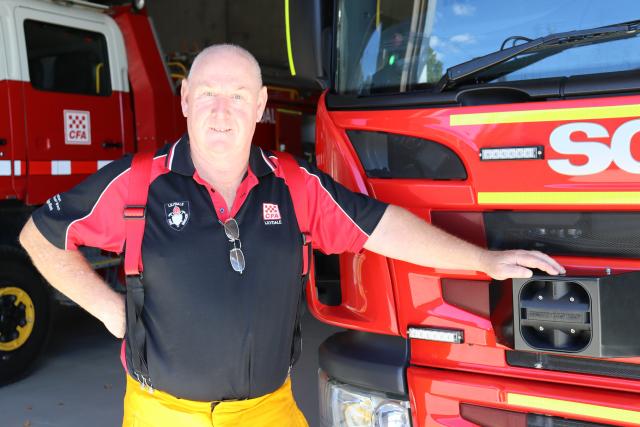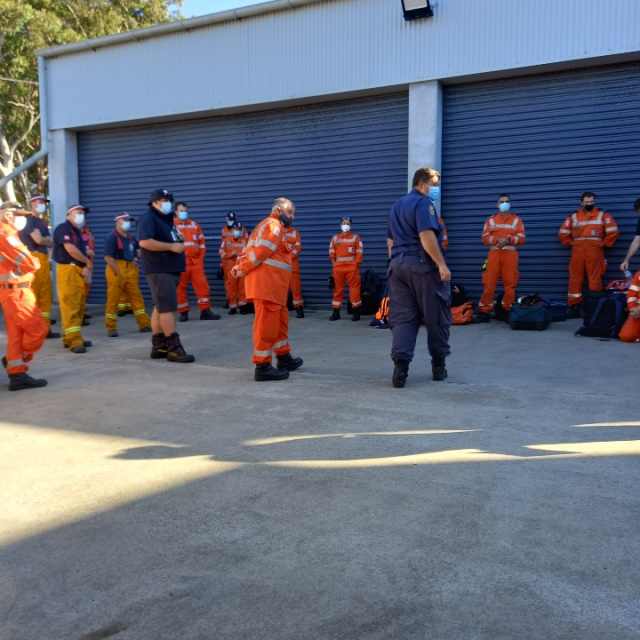
By Mikayla van Loon
While the floods in Lismore New South Wales may seem far removed from the communities in the Yarra Ranges, for Lilydale CFA first lieutenant Tony Brock, it is not a case of us and them.
Having travelled to the flood ravaged town in northern NSW to offer critical emergency care, Tony was shocked by the situation facing these communities that have been hardest hit.
Tony said the topography of Lismore is very undulating, wedged between mountains and two rivers and with half a metre of rain in 24 hours there was nowhere for the water to go.
Streets were lined with the furniture and belongings of families that once created their lives and homes, plasterboard was ripped off the inside walls leaving just frames and cars were left covered in mud from roof to tire.
Initially the pager message was put out for experienced chainsaw operators to volunteer in Lismore but Tony said as he got there, the need changed to rapid assessment crews.
In a crew of about 30 SES and CFA volunteers, Tony spent five days with Scoresby first lieutenant Brendan Rosenbrock responding to call outs of all kinds, repairing roofs, packing sand bags, checking on peoples’ welfare and being a friendly face in a time of turmoil.
Dorothy Collins, 82, was one of those people Tony was able to reach and assist after a tradesperson said it would cost $3000 upfront to fix her roof that had become exposed.
“She was crying and crying and saying ‘I can’t afford that and I’ve been trying to get help and I know there’s a lot of worse people off than me and they lost their houses’,” Tony said.
“I sat there for a while with her so I understood what her problem was and then once I fully understood it, we were into it, we got stuck into it and we fixed the thing.”
In great appreciation of the help Tony and his crew gave her, Dorothy said she has “never met a more lovely group of gentlemen in [her] life.”
“I was ill with worry and they’ve fixed my heart,” she said.
“These wonderful gentlemen have now secured me in my house for many years.”
Reaching some of the most remote houses in Lismore, Tony said while the impact varied from house to house it was so widespread.
“We could see there were houses over [in Main Arm] and no one had been to them, we didn’t know if they were ok.
“This river, you could see how high it had been and how it had hit their houses and I came across this lady and she’s in tears and I said, ‘What’s wrong? And she says, ‘my husband’s hurt himself, he’s in a bad way’ and this woman was in her late ‘70s.”
Tony said some of the water that came gushing from inside people’s homes was like the sound of a waterfall, something that had to be seen to be believed.
Although people were going through chaos upon returning to their homes, Tony said there were many people not sure how to ask for help.
“People go, and this is the Australian way, ‘there’s a lot of people worse off than us’ so they don’t register [with the SES] but they’re in a lot of trouble.
“It’s when you have fresh eyes looking at it, you go ‘mate, you’re in a world of pain’.”
While the government took some time to get going, Tony said its systems were well and truly in place by the time he was in Lismore, particularly the help from the Armed Forces.
“Speaking to the locals, the Armed Forces did a fantastic job helping them get the furniture out and get it on the nature strip and help clean up.”
As someone who joined the CFA to assist the community when needed, Tony said it was a simple decision for him to volunteer having done so after most natural disasters.
Having seen the destruction of the Black Saturday Bushfires and the Black Summer Bushfires, Tony said nothing quite compares to the reality of a flood.
“When a bushfire goes through it just burns everything. Everything’s lost. Animals are killed but the birds can fly away and some animals can outrun it or they have an instinct to run into water.
“But with a flood, it’s just this body of water and they get tired and they drown. So there’s more loss of animal life in a flood.
“When the fire goes through, when the rains come, you’ll see the green shoots coming out of the trees and it repairs, it regenerates but with a flood that doesn’t happen.
“A flood, the trees come down because it’s so wet. There’s nothing there to hold the roots. So big trees come down all over the roads. The water gets under the tar and then you get big deep potholes.”
With the state of the roads infrastructure as it is, Tony said it will take a year just to fix that so these communities can travel smoothly, let alone the time it will take to rebuild houses with trades people now without tools, Bunnings flooded and the demand for timber increasing.
“They talk about a once in a thousand year flood and whether you believe in climate science and whether the world is warming up, it isn’t getting better, it’s getting worse. So the fires are going to get worse. The floods will probably get worse.”
In just five days, the impact the aftermath of the floods had on Tony was evident, as he scrolled through his phone to display messages of the people he helped – he had continued to check on them days after meeting them.
“If they call again [for volunteers] I’ll go because they need all the help they can get.”










